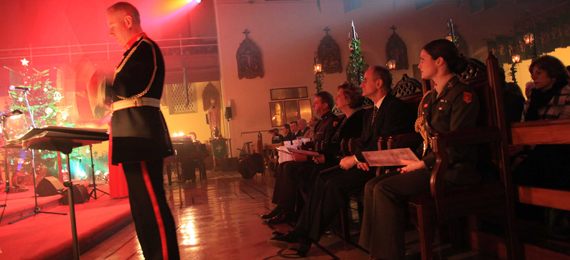
Christmas cannot be complete without Christmas carols. But have you ever wondered who invented the Christmas carols? Are you actually aware of the story behind Christmas carols? The origin of Christmas carols might surprise you. In this article we will discuss the interesting history of Christmas carols.
Christmas carol definition
Christmas Carols are a song or hymn on the theme of Christmas. It is traditionally sung during the holiday season. The word ‘carol’ means dance or a song of praise and joy.
There are many stories that explain the history of Christmas songs. We have explained to you the most discussed and believed ones.
“ A Bone, God Wot” Is a 16th-Century Christmas Carol.
- A. True
- B. False
Christmas caroling background
The first known Christmas hymn may be traced back to 4th-century Rome. Latin hymns such as Veni redemptor gentium were written in opposition to Arianism. Corde natus ex Parentis is a famous hymn that is written by the Spanish poet Prudentius. This song is still sung in some churches today. Later in the 9th and 10th centuries, the Christmas “Sequence” or “Prose” was introduced in the Northern European monasteries. Only in the 12the century, the Parisian monk named Adam of Saint Victor drove music from popular songs and introduced something similar to what is currently known as traditional Christmas carols. They were used to be sung in all four seasons but singing them during the Christmas season only became popular.
There was also another popular Christmas carol history that Pagan songs were sung in Europe thousands of years ago celebrating the Winter Solstice. Early Christians took over it and asked people to sing Christian songs. One of the first Christian carols ever recorded was in 129 A.D and it was called ‘Angels Hymn’. Another Christian Hymn was written by Comas of Jerusalem, for the Greek Orthodox Church in 760. After this point, people started to write Christmas Carols widely.
In the 13 century, in countries such as France, Germany, and Italy, a tradition of popular Christmas songs in regional native languages developed. Christmas carols in English were first appeared in 1426 in a work by John Awdlay. The songs which we sing now as carols were originally considered communal songs. In the initial stages, these songs were sung during celebrations such as ‘Harvest Tide’ and ‘Christmas’. Only in the later stages, these carols were meant to be sung in churches and in celebrations associated with Christmas. Many people cannot adapt to it as they were written in Latin.
A collection of late medieval Latin songs that was first published in 1582 is called Piae Cantiones. Some of the songs which are imprinted in this are very popular even now. You can find Latin forms of carols like “Good King Wenceslas” and “Good Christian Men, Rejoice” in this book.
When the Puritans came to England in the 1640s, the practice of singing Christmas carols stopped. Also, Puritans banned christmas festival in England for almost 20 years.
When singing public carols were less popular, there were official carol singers called ‘Waits’. These bands were led by local leaders of the village. They specifically sing songs only on Christmas Eve.
Carols started gaining popularity only after the reformation in the countries where Protestant churches gained prominence. The Lutheran reformation gave a very warm welcome to music. This is the reason why carols became popular and were encouraged to use during worship.
Many orchestras and choirs were set up to sing Christmas carols in the cities of England.
Later in the 19th century, Christmas music books were published.
In the 20th century, Carols for Choirs was published by OUP in the English-speaking world. It was first published in 1961 and was edited by David Willcocks and Reginald Jacques. This series became so popular that it was expanded to a five-volume set.
The carols we sing now in the churches do not necessarily carry words that are religious. The 16th-century song “A Bone, God Wot!” might sound like a wassailing song (songs that are sung during drinking or while requesting ale) but are actually a Christmas carol as described in the British Library’s Cottonian Collection.
Many Carol services were created in the later stages. One such popular service that has been followed even today is Carols by candlelight service. In this service, Christmas is celebrated by lighting the whole church with candles.